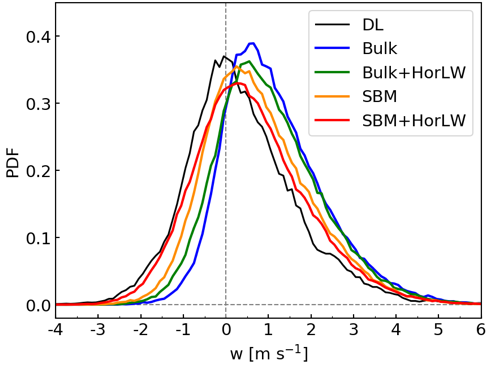Endo, Zhang, Vogelmann, Kollias, Lamer, Oue, Xiao, Gustafson, and Romps, Reconciling differences between large-eddy simulations and Doppler-lidar observations of continental shallow cumulus cloud-base vertical velocity, GRL, 2019
Paper
Description
Observations of shallow cumulus give a surprising result: there is almost as much cloudy air moving down at the cloud base as there is moving up. This challenges the standard conceptual picture of cumulus clouds as pumping air from the sub-cloud layer up into the cloud layer. This observation also conflicts with large-eddy simulations, which produce much more cloud ascent than cloud descent at the cloud base.
As it turns out, the problem is with the simulations, not the observations. They key to reconciling the simulations with the observations is to ditch "saturation adjustment" in favor of a scheme that prognoses droplet growth/decay as a function of the supersaturation/subsaturation. This then produces descending cloudy air at the cloud base that is so subsaturated that it would be clear air if given the time to equilibrate. Thus, by upgrading the microphysics scheme, some clear-air descent converts to cloud descent, allowing the simulation to much more closely match the observations. An additional boost to the amount of cloudy descent is provided by modeling longwave cooling on the cloud sides. Together, these two fixes reconcile the large-eddy simulations with observations.
